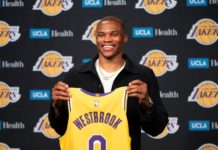MINNEAPOLIS — Is the Vikings’ offense better, worse or the same?
That’s the question facing the Minnesota Vikings after they claimed an overtime victory against the New Orleans Saints in the NFC wild-card round, which in turn helped extend Kirk Cousins’ time in Minnesota through the 2022 season.
• Vikes’ offense: better, worse or same?
• How 49ers-Mostert impasse plays out
• Dunbar’s issues a chance for Flowers?
• Cam Newton brings Vegan Strong motto
• Fan’s hobby a serious for Washington
The theme of the 2020 Vikings offense is this: Most of the personnel remains the same, as do the scheme and the system they’re running. Continuity was the buzzword this offseason, and despite trading away one of the NFL’s best receivers, the Vikings believe the personnel they have and the decisions made in the draft can help the team take one step further in the postseason.
So, on the cusp of training camp, it’s time to look at the Vikings’ offensive roster to determine if, based on several changes, they’ve improved this offseason.
Receivers
Additions: Justin Jefferson (draft), Tajae Sharpe (free agent), KJ Osborn (draft), Quartney Davis (undrafted free agent), Dan Chisena (undrafted free agent)
Losses: Stefon Diggs, Laquon Treadwell
Returners: Adam Thielen, Bisi Johnson, Chad Beebe, Alexander Hollins, Dillon Mitchell, Davion Davis
Better, worse or the same? Worse.
The loss of Stefon Diggs will be felt this season. His replacement, Justin Jefferson, exhibited record-setting abilities in the slot at LSU and was a first-round pick. The determination given to the Vikings’ receiving corps is no slight on Jefferson or anyone else on the roster. You just don’t magically become “better” when you lose an elite talent like Diggs, no matter whom you draft to replace him. Jefferson was part of an NFL-style offense under Joe Brady at LSU and has a defined route tree. The Vikings will lean heavily on that skill set to pick up where they left off after breaking up the NFL’s top receiving duo.
Coming off a season marred by a hamstring injury, Adam Thielen will see his targets spike at the same time that the attention he receives from defenders increases a ton. Until Jefferson is viewed as a legitimate threat for opposing teams, Thielen will have to fight through the added attention if he wants to produce the third 1,000-yard-receiving season of his career.
Guys like Bisi Johnson, who appears to be the early favorite for the third wide receiver’s job, Tajae Sharpe, Chad Beebe and fifth-round draft pick K.J. Osborn have a chance to round out the depth chart and fill roles that would allow the Vikings to deploy more three-receiver sets. Minnesota appears to have more slot options than it does true outside receivers, which could be just what Cousins needs to become more comfortable finding windows over the middle of the field.
Running backs
Additions: Jake Bargas (fullback; undrafted free agent)
Losses: None.
Returners: Dalvin Cook, Alexander Mattison, Ameer Abdullah, Mike Boone, Tony Brooks-James, C.J. Ham (fullback)
Better, worse or the same? Same.
Minnesota is committed to running the ball, whether it’s going into the hands of Dalvin Cook or another running back.
Cook is the focal point of this offense, and it shows up in a lot of areas. Kirk Cousins’ passer rating on play-action throws is 141.4 when Cook is on the field and 112.0 when he’s not. The fourth-year running back ranked second behind Christian McCaffrey in yards from scrimmage per game (118.1) in 2019 and led the NFL with 11.3 yards after the catch per reception, according to ESPN Stats & Info.
If Cook holds out, the Vikings will turn things over to Alexander Mattison, Ameer Abdullah and Mike Boone. While Cook averaged 4.5 yards per rush last season, the three other running backs averaged 4.9. Mattison, Boone and Abdullah also averaged more yards before contact per rush and more yards after contact per rush.
Without Cook, the Vikings aren’t as explosive in the run game, but they can certainly get the job done. Offensive coordinator Gary Kubiak has gotten success from plenty of under-the-radar backs throughout his career, but the element that Cook brings to the offense would undoubtedly be missing.
Tight ends
Additions: Nakia Griffin-Stewart (undrafted free agent)
Losses: David Morgan
Returners: Kyle Rudolph, Irv Smith Jr., Tyler Conklin, Brandon Dillon
Better, worse or the same? Same.
The Vikings will need to ask for more from their tight end group in the passing game with Diggs no longer on the roster. That’s where Smith comes in.
The second-rounder showed he could handle everything that was asked of him as a rookie in 2019, which started out as a blocking role that morphed into an important element of the passing game by year’s end (36 catches, 311 yards and 2 TDs). Rudolph, a 10-year veteran, led the Vikings in tight end receiving yards every year but 2019, and that has to do with Smith’s emergence.
Few teams run as much 12 and 22 personnel (two tight ends are on the field) as the Vikings. Smith presents a higher upside as a receiver than Rudolph at this point in his career, which is why his usage as an F-tight end should spike in 2020. Oftentimes, the No. 3 receiver in Kubiak’s offenses are actually tight ends. That’s a role Smith could fill early on in 2020.
“I think there’s a big, big upside here,” Kubiak said. “I love Irv as a kid and as a competitor. He really enjoys coming to work every day, and he’s benefited from sitting back there right next to ‘Rudy’ [Kyle Rudolph] every day and watching a seasoned pro go about it. So I think there’s a lot more there, and Irv’s going to give it to us, and I’ve got to make sure that I get him in position to do that.”
Rudolph is an important red zone threat, where six of his touchdowns came in 2019, so we should expect to see his targets remain consistent inside the 20. He’s a strong blocker, too, which is critical to the success of this offense.
Offensive line
Additions: Ezra Cleveland (draft), Blake Brandel (draft), Kyle Hinton (draft), Brady Aiello (undrafted free agent), Jake Lacina (undrafted free agent), Tyler Higby (undrafted free agent)
Losses: Josh Kline
Returners: Riley Reiff, Pat Elflein, Garrett Bradbury, Dakota Dozier, Brian O’Neill, Rashod Hill, Dru Samia, Aviante Collins, Oli Udoh, Brett Jones
Better, worse or the same? Better.
Hear me out.
We say this most years about the Vikings offensive line. In some instances, new players and adjusted positioning for others was expected to improve a unit that ranked 22nd in ESPN’s Pass Block Win Rate (ability to sustain blocks for 2.5 seconds) at 54 percent over the last three seasons combined. More recently, Gary Kubiak’s zone blocking scheme was thought of as the fix to play to the strengths of this unit’s personnel.
Well, this season Minnesota boasts the combination of new players (namely Cleveland, who could eventually be a franchise left tackle), another year in the same zone scheme, and the goal of improving the interior of the O-line with a “wide open competition” at both guard spots. According to general manager Rick Spielman, this will likely result in significant changes to the starting five.
Samia and Udoh are “going to have to catch up,” according to Kubiak, but both have a shot at earning important roles after using their rookie seasons as a red-shirt year to learn the offense. Elflein’s 32 pressures allowed in 2019 were the ninth-most of any guard, according to Pro Football Focus, so the Vikings’ former center-turned-left guard faces the most competition of any lineman for his job at that could be occupied by the aforementioned names, Dozier, Collins and even Reiff.
Without an offseason program, it’s too early to guess whether Cleveland will be ready to play left tackle in 2020. If he is, then Reiff could bump inside to left guard, a move that would solidify that side of the line. The two spots that aren’t up for debate are center (Bradbury) and right tackle (O’Neill). The remaining three positions have a ways to go before Minnesota can confidently settle on a starting five, but the commitment to improving the interior is necessary and should help sort out some of the problem areas in pass protection from the last few years.
Quarterbacks
Additions: Nate Stanley (draft)
Losses: None.
Returners: Kirk Cousins, Sean Mannion, Jake Browning
Better, worse or the same? Same.
The reason the word “continuity” is used to describe Minnesota’s goals for the offense is centered around Cousins. For the first time in his career as a starter, Cousins didn’t have to spend the offseason learning a new offensive system. Kubiak didn’t call plays in 2019, but it was his scheme that former OC Kevin Stefanski ran. Since Cousins was able to win the first playoff game of his career in this offense, what’s to say he can’t do it again and go a step further in 2020?
That’s the question Minnesota wants to answer. The Vikings are one of heaviest play-action teams in the NFL. A year ago, nearly 32 percent of Cousins’ 481 dropbacks were play-action attempts, which resulted in him completing 102 of 142 passes (71.8 completion percentage) for 1,373 yards and 14 touchdowns, which were the most in the NFL. His 129.2 passer rating on play-action throws was the best in the league, and his 9.7 yards per attempt on such passes ranked third.
So much of the Vikings’ and Cousins’ success last season was based on play-action and an outside zone running scheme. No matter what happens with Cook or if Minnesota turns to Mattison, those two things will remain staples of this offense based on how it translates to success at the quarterback position.
The one area Cousins is criticized, fairly and unfairly, is how he performs when pressured. Kubiak can change Cousins’ launch points and roll him away from pressure to find the open receiver downfield, but incorporating an even bigger screen game (44 percent of Cousins’ screen passes were converted to first downs, the highest rate of any starting QB) is just one way the Vikings can orchestrate opportunities for Cousins to get the ball out quicker. Improved pass blocking on the interior of the O-line will help, too.
Source : ESPN













